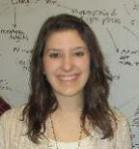YANSS Podcast 021 – Christina Draganich explains how anyone can use science as a tool to understand nature, human and otherwise
The Topic(s): Placebo Sleep and Science
The Guest: Christina Draganich
The Episode: Download – iTunes – Stitcher – RSS – Soundcloud

Photo by Matteo Ianeselli, via Wikimedia Commons, http://bit.ly/1fAKROj
In 1998, The Journal of the American Medical Association published research that debunked therapeutic touch and moved the well-meaning mystical practice out of the kingdom of medicine and into the abandoned strip mall of quackery.
At the time, touch was enjoying a surge in popularity in hospitals and clinics. Practitioners claimed that they could manipulate mysterious energy fields and bring about healing by placing their hands above the body of the sick. The people doing this kind of work thought they were doing something wonderful, something good, but it was wishful thinking that had somehow bypassed the checks and balances of medical science.
The research that revealed therapeutic touch was bunk was based on a 9-year-old girl’s fourth-grade science fair project. Emily Rosa had already conducted several sound experiments based on her skepticism, and with the help of some career academics, her work was expanded. She is now part of history, the youngest person to publish research in a peer-reviewed scientific journal.
One of the central themes of You Are Not So Smart is you are so bad at thinking, judging, and deciding that your species had to invent a tool to help you work on the sort of problems you, as a human, are terrible at solving. For example, “Can I heal someone with my hands and empathy alone?” or “Should I pay someone to wave his hands above my dying mother?” or “Should health insurance plans cover healing touch?” or “Should our university offer nurses classes in manipulating energy?” These are not easy questions to answer correctly. Without science, you’ll probably get them wrong.
Hundreds of people over the centuries have slowly perfected a method, an invention, that continues to help humans leave the warmth of false certainty, embrace ignorance, and trade the fires of the stake for the fires that sent golf balls to the moon. If you are unacquainted with the basics of science, you will stumble around in the dark, flailing your hands, stumbling over cognitive biases, logical fallacies, weird heuristics, and so on. With science, with the tools and the tutelage of great teachers, a 9-year-old can drive through roadblocks of ignorance like the Dukes of Hazard and make the entire species a percentage point smarter.

In this inbetweenisode, Christina Draganich explains how, as 21-year-old undergraduate, she came up with the idea to research placebo sleep, which led to a new scientific discovery, and she tells us how anyone with the right guidance can use science to expand our understanding of the natural world.
We also learn about new research that has identified a “continuity field” generated by the human brain to keep us from going mad.
Links and Sources
The Power of Positive Sleeping (story about the study)
Scientists pinpoint how we miss subtle visual changes, and why it keeps us sane
Emily Rosa and Therapeutic Touch

David McRaney's Blog
- David McRaney's profile
- 582 followers



